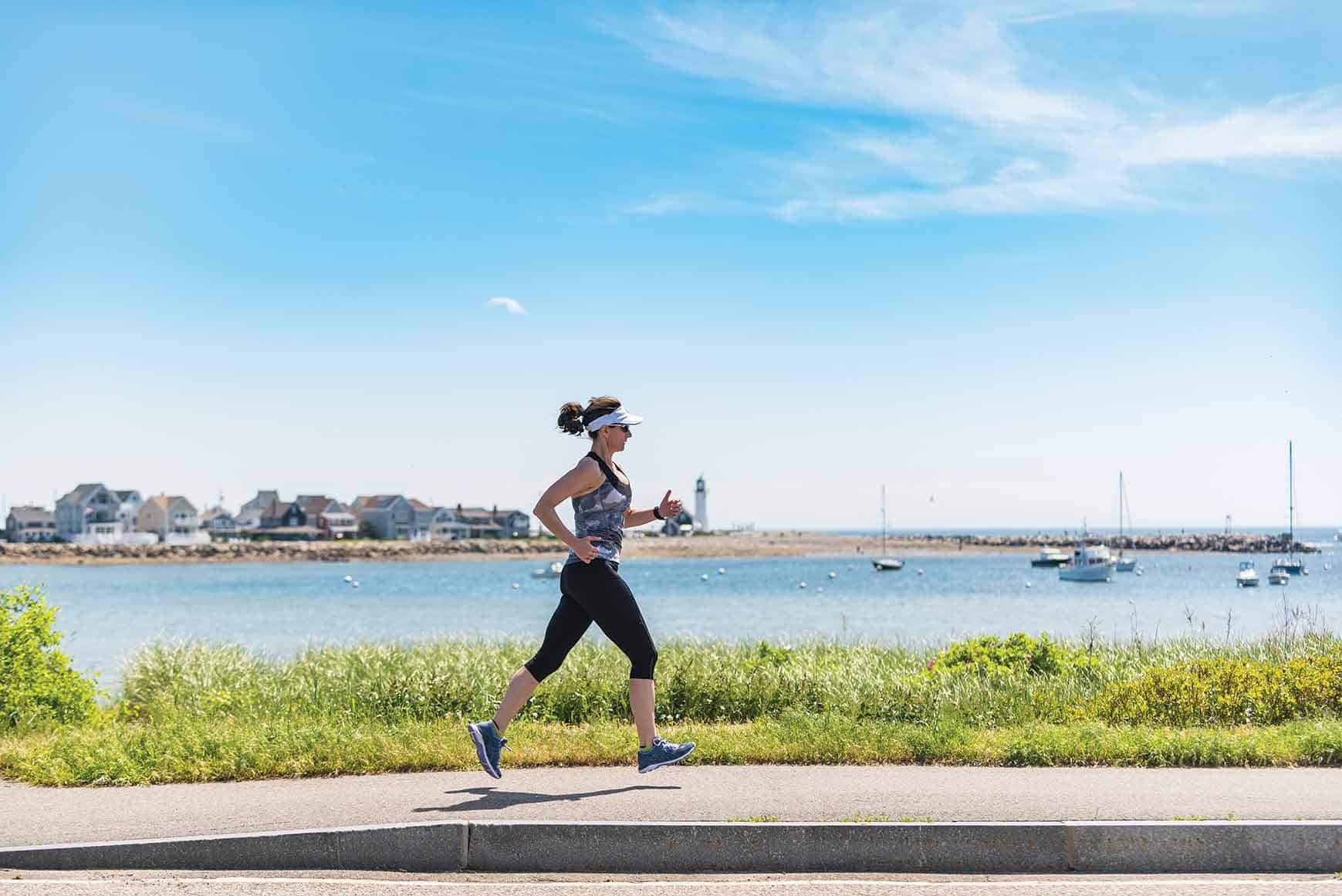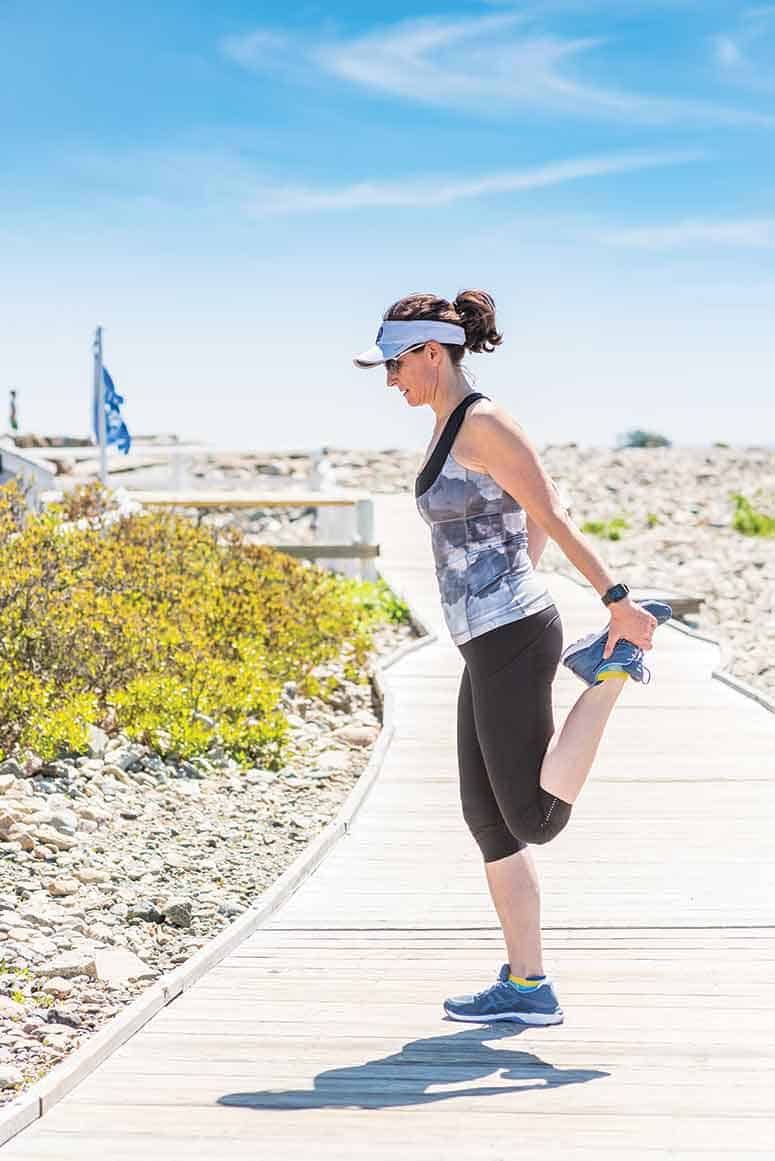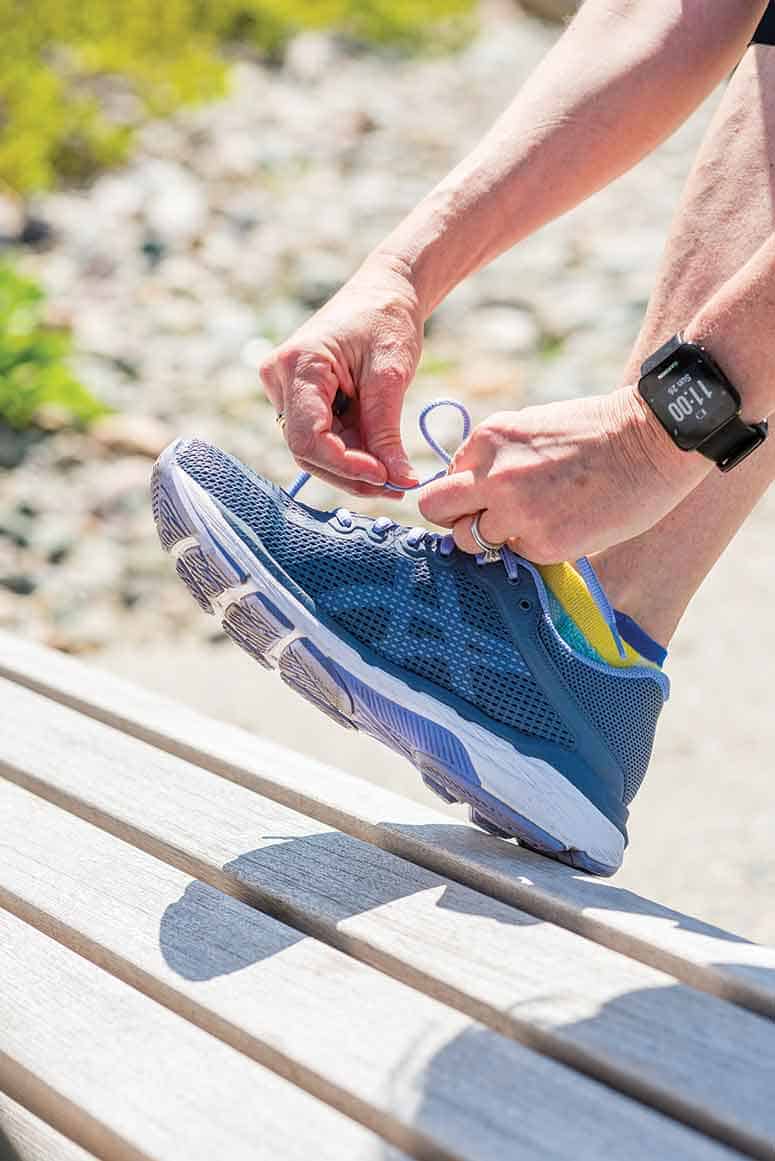What every runner should know about race prep and recovery
Photography by Kjeld Mahoney
From quiet forest trails to scenic seaside roads, the South Shore has no shortage of great places to run. Whether you’re a fan of the 5k or a dedicated marathoner, it’s important to take good care of your body before and after races. We chatted with Cindy Doody, owner of Body Blueprint Center in Cohasset and Hingham, to learn about some of the different therapies available to local road warriors.

At what point should an athlete seek out muscular recovery therapies?
We encourage proactive care for the body. Athletes of all ages come to us for post-run recovery and we make sure to educate them on the importance of recovery throughout their training. Muscular Therapy helps you to prevent those unexpected kinks along the way that can transform into major issues.
What steps should a runner take to reduce recovery time after a race?
As soon as you cross the finish line, you immediately shift from racing to recovery mode. I recommend booking your post-race massage appointment well in advance to make recovery a pre-scheduled priority. In the following 24 hours, be sure to keep your body moving. Take slow walks or slow bike rides, indulge in warm baths with Epsom salt, apply ice packs on the swollen areas, elevate your legs against the wall for circulation, wear compression recovery sleeves, pants and/or socks—anything to help improve circulation.
What are the benefits of compression sleeves and who uses them?
Anyone who needs to add more circulation into their legs can benefit from compression sleeves. They feel amazing. The two brands we like best are NormaTec and Air Relax, which are great for all fitness levels and especially runners.
Are certain types of massages more beneficial to runners?
Your massage should always be customized, aligning with your personal holistic needs. Depending on the client, we create an individualized “blueprint” which might incorporate neuromuscular therapy, myofascial release, trigger point therapy, joint mobilization and active recovery stretching. Timing matters tremendously, and therefore we recommend you seek out a therapist who understands your training cycle. If there is extensive pain occurring, you should consult a doctor beforehand to eliminate any medical-related questions that might arise.
How and when do you suggest runners use RockTape?
RockTape is a kinesiology tape made of cotton and nylon fabric with adhesive on one side. The tape creates a mechanism which lifts and pulls the skin away from soft tissue, allowing blood to flow into a specific area to accelerate healing and recovery. It can also help you to reduce swelling, improve blood flow, and coordinate movement/tracking and proprioceptively offer support and compression. That being said, I don’t recommend trying anything new right before a race, as you must give your body the appropriate time it deserves to ensure that every treatment and technique is the very best fit for you.
Are you a fan of foam rolling?
I definitely see the benefits of foam rolling for the larger muscles such as the glutes and quads. However, I have seen people rigorously foam-roll their IT bands at the gym, which is unnecessary and can result in a negative effect. For runners, it’s also important to work on your feet. This is crucial because it will help with your gait and alleviate pain in other areas of your body.
How long is a normal recovery time?
A general rule of thumb is to wait one day per mile, before you run hard again. For example, after a half marathon (13.1 miles), it would be almost 2 weeks out from race day before you want to consider restarting your intense speed work. Yoga and Pilates are both excellent activities to engage in during your recovery period, since they are low-impact, low intensity and focus on stretching and realigning tight spots. Three to seven days may seem like a long time to take a break from running, but delayed onset muscle soreness can occur anywhere from 24 to 72 hours after a race. By waiting at least four or five days you avoid adding further stress and fatigue to your muscles. Injury-free training is a smart and necessary investment for your body in the long term.

"Running is central to my stress management and overall health. Body Blueprint has played a critical role by helping me stay healthy and injury free. Last year when I was training for the Boston Marathon, I injured my hamstring. I came to the Body Blueprint team in a bit of a panic that I might be unable to run the marathon. The team worked together to create a massage and strength training plan to get me back to running. It is definitely because of their support and expertise that I was able to run Boston. They’ve given me the tools and knowledge to take better care of my body. I still go there for “tune-up” massages to keep me running without pain."
— Beth Mercurio of Hingham

Body Blueprint Center opened its Hingham location at the end of May. The new full-service performance center is housed within a 10,000-square-foot facility together with wellness partners Momentum Custom Fitness, BOXGEN Performance and Serenity Reiki Healing.
124 King St., Cohasset
150 Recreation Park Dr., Hingham
To learn more, visit
bodyblueprintcenter.com.
